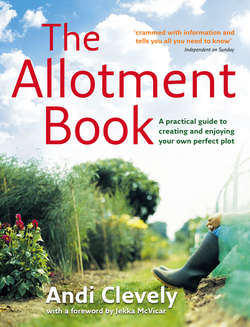Читать книгу The Allotment Book - Andi Clevely - Страница 16
Alternative methods
ОглавлениеGardeners have explored and tested alternative methods of cultivation, particularly since a spreading ecological awareness has meant that chemical-based gardening seems increasingly untenable and is no longer the norm. Attempts to treat nature as an ally and work in harmony with the environment have resulted in a variety of sympathetic approaches.
The most familiar of these is organic gardening, but other approaches have gone further: biodynamic gardening harnesses the subtle influence of the moon’s phases on growth, for example, while forest gardening imitates the natural structure of woodland habitats to pack a lot of plants amicably into a small space.
None of these methods has a monopoly on success, nor are they mutually exclusive, and the basic mechanics of sowing, planting, tending and harvesting remain broadly the same whichever you choose. In the end your own inclination and personal conviction through good results will help you decide which and how many of these methods feels right for managing your allotment.
ORGANIC GARDENING Many plot-holders first choose to grow their own because they want top-quality fresh food produced in a way they approve, which often means organically. But there is more to organic gardening than simply giving up artificial fertilizers and chemical pesticides. Replacing these inorganic inputs involves following a different cultural routine more in harmony with natural cycles and environmental susceptibilities.
Possibly the most fundamental principle is to feed the soil rather than the plant, using organic materials, such as compost and manure (see pages 116–19), that encourage soil organisms to flourish and make nutrients available to plants. It is even possible to abandon animal manures if you prefer, and concentrate instead on garden compost, leafmould (see page 208), plant-based fertilizers and green manures (see page 119) as sources of fertility.
Controlling problems involves a range of precautions and treatments (often termed ‘integrated pest management’) rather than simply reaching for a specific spray. Efficient crop rotation (see pages 32–5) is one sound method. This can be combined with using resistant plants sown at times when pests are less prevalent, encouraging natural predators and companion plants (see page 35), and keeping the plot tidy and well maintained.
